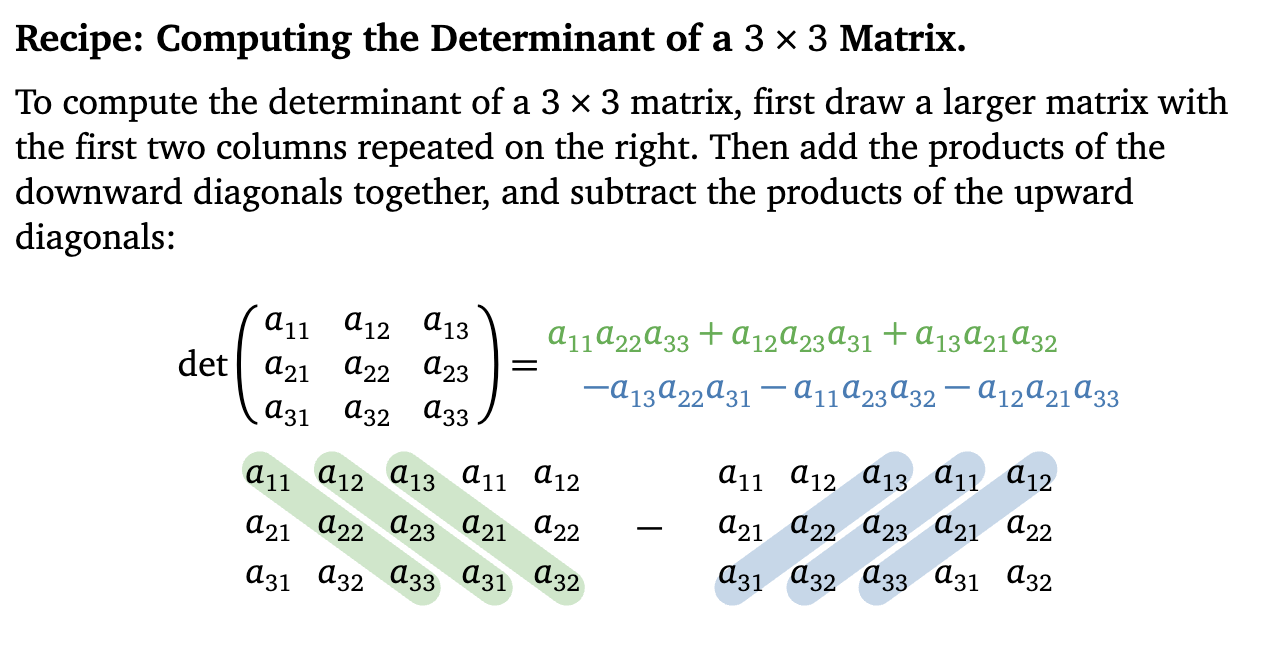Math2940 Prelim 2
1/11
There's no tags or description
Looks like no tags are added yet.
Name | Mastery | Learn | Test | Matching | Spaced |
|---|
No study sessions yet.
12 Terms
What is a vector space?
A vector space is a set of vectors that is closed under vector addition and scalar multiplication. It must satisfy the following properties:
Associativity of Vector Addition: For any vectors u, v, and w in the vector space, (u + v) + w = u + (v + w).
Associativity of Scalar Multiplication: For any scalars a and b, and any vector u, a(bu) = (ab)u.
Existence of Zero Vector: There exists a zero vector (0) such that for any vector u, u + 0 = u.
Existence of Negatives: For each vector u, there exists a vector -u such that u + (-u) = 0.
Distributivity: For any scalars a and b, and any vector u, a(u + v) = au + av.
Identity for Scalar Multiplication: For any vector u, 1*u = u
Invertible matrix theorem
a. A is an invertible matrix.
b. A is row equivalent to the n×n identity matrix.
c. A has n pivot positions.
d. The equation Ax = 0 has only the trivial solution.
e. The columns of A form a linearly independent set.
f. The linear transformation x ↦ Ax is one-to-one.
g. The equation Ax = b has at least one solution for each b in ℝⁿ.
h. The columns of A span ℝⁿ.
i. The linear transformation x ↦ Ax maps ℝⁿ onto ℝⁿ.
j. There is an n×n matrix C such that CA = I.
k. There is an n×n matrix D such that AD = I.
l. Aᵀ is an invertible matrix.
Algorithm for finding A-1
The row reduced form of [A I] is equivalent to [I A-1 ]

How to multiply matrices
Essentially, if A and B are both matrices then AB is [Ab0 … Abn] where b0…n is an element of the matrix B.
![<p>Essentially, if A and B are both matrices then AB is [Ab<sub>0 </sub>… Ab<sub>n</sub>] where b<sub>0…n</sub> is an element of the matrix B.</p>](https://knowt-user-attachments.s3.amazonaws.com/035ad99c-6ba9-4fdb-839b-f98e2cd752d1.png)
Rank & Invertible Matrix Theorem
Let A be an n x n matrix. Then the following statements are each equivalent to the statement that A is an invertible matrix:
The columns of A form a basis of Rn
ColA = Rn
rankA = n
dimNulA = 0
NulA = {0}
Invertibility criteria in terms of determinants
A square matrix A is invertible iff det(A) ≠ 0
Properties of determinants
Row Operations
If, in a matrix A, a multiple of one row is added to another row to produce the matrix B then det(A) = det(B)
If two rows are interchanged in matrix A to produce matrix B, then det(A) = -det(B)
If one row of A is multiplied by k to produce B then det(B) = k det(A)
if A and B are n by n matrices then: det(AB) = det(A)det(B)
What is a cofactor and what is the sign of a cofactor determined by?
Sign: (-1)(i+j)
A cofactor is
Geometric interpretation of matrix multiplication & corresponding formula
isomorphism
isomorphisms preserve the relationships between structures, so the algebraic and arithmetic operations are the same and if a mapping is onto and/or one-to-one then it still one-to-one and
Ways of computing determinants
Row reduction into echelon form: the product of the entries on the main diagonal is the determinant of the matrix, but with a sign change (-1)r where r is the number of interchanges we did to get it in echelon form.
Cofactor expansion: uses a recursive formula to compute the determinant by expanding along a row or column.
Formulas for 2×2 and 3×3 cases:
ad-bc
For the 3×3 case, there is an attached image

a